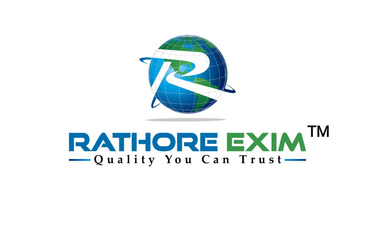“RATHORE EXIM”
Start Wrought Iron Craft Manufacturing Unit in India – Launch a Traditional Tribal Art Business
Launch your own wrought iron craft manufacturing unit in Bastar, Chhattisgarh — the heartland of tribal art in India. Get support for land, iron raw material, and collaboration with skilled tribal artisans to build a traditional iron craft business. Manufacture handmade wrought iron decor, tribal wall art, metal sculptures, and rustic iron furniture for domestic and export markets. Ideal for eco-friendly handicraft units, metal home decor startups, and cultural heritage businesses. Tap into tribal artisan talent, government craft schemes, and the global appeal of Indian ethnic metal art.
Wrought Iron Craft – The Ancient Metal Art of Bastar
✅Land will be arranged and provided by us. The investor is required to invest in plant setup
Overview
Iron Craft, known as Loh Shilp, is a centuries-old tribal blacksmithing art practiced by Bastar's Gondi and Maria communities. With minimal tools, artisans forge iron into expressive human, animal, and deity forms. Once used for rituals and weapons, it now holds a prized place in eco-friendly decor and art circles globally.
Business Ideas Using Iron Craft:
Interior Decor Pieces (Wall hangings, sculptures)
Garden Iron Art Products (Lamps, animal figures)
Customized Tribal Art Commissions
Export to Eco-Art & Cultural Retailers
Setup Guide:
✅ Tools & Furnace: Traditional forge, anvils, hammers, tongs, hand tools
✅ Artisan Collective: Create SHGs or craft clusters; training in modern finishing
✅ Branding & Sales: Heritage-based marketing, urban & export exhibitions
Export Potential: Germany & Denmark – Green decor & sustainable art trend USA & UK – Eco-minimalist interiors Australia – Indigenous art markets
Certifications: Handicraft Registration, Export License (EPCH)
❓ Frequently Asked Questions (FAQs)
Q1. What is tribal wrought iron craft, and why is it culturally important?
Wrought iron craft, known locally as Loh Shilp, is a centuries-old tribal blacksmithing art practiced by the Gondi and Maria communities of Bastar, Chhattisgarh. Traditionally used for tools and rituals, it now symbolizes India’s eco-friendly tribal metal art heritage, gaining global appreciation for its raw texture and symbolic designs.
Q2. How can I start a wrought iron craft manufacturing unit in India?
To start your own wrought iron craft unit, you need basic infrastructure like anvils, traditional furnace, hand tools, and a skilled artisan team. We assist with:
Land support
Artisan cluster formation
Tool setup and production guidance
Branding and export channel creation
You only invest in the plant setup and machinery — the rest is facilitated.
Q3. What products can be manufactured using wrought iron tribal art?
You can produce:
Handmade wall hangings and interior decor pieces
Metal sculptures of human, animal, and deity forms
Rustic iron furniture for homes and cafes
Garden art items like lanterns, tribal figures, and stakes
Customized tribal commissions for retail and exhibitions
Q4. What raw materials and tools are needed for iron craft production?
Raw Material: Recycled or processed iron rods and sheets
Tools: Traditional forge, anvils, hammers, tongs, hand chisels
Finishing: Wire brushes, polishing pads, matte coating, and lacquering
This makes it a low-waste, eco-friendly production process.
Q5. Is wrought iron art suitable for export?
Absolutely. Indian tribal wrought iron art has strong export potential in:
Germany & Denmark – Green design & sustainable decor
USA & UK – Eco-minimalist and ethnic interiors
Australia – Indigenous art-inspired decor retail
Q6. What government certifications or licenses are required?
For legal operation and exports, you'll need:
Handicraft registration (via DC Handicrafts/State bodies)
IEC (Import Export Code)
EPCH Registration for trade fair access
Optional: GI certification (if registered), Fair Trade or MSME Udyam registration
Q7. How do I create or connect with a tribal artisan collective?
We help you form Self Help Groups (SHGs) or craft clusters with skilled Bastar tribal artisans. This model ensures:
Authentic production
Employment generation
Eligibility for government schemes and training programs
Q8. How is tribal wrought iron craft different from industrial iron decor?
Unlike factory-made decor, tribal wrought iron sculptures are:
100% handmade
Forged with minimal tools
Created with symbolic meaning
Each piece reflects the craftsman’s heritage and identity, making it a collectible, not a commodity.
Q9. What kind of branding or marketing works best for iron craft?
We recommend:
Heritage-based branding focused on storytelling
Eco-friendly packaging and labeling
Showcasing at urban and international exhibitions
Targeting cultural institutions, sustainable decor chains, and fair-trade buyers
Q10. Is there support for online sales of tribal iron craft?
Yes, we guide you in:
Listing products
Packaging compliant with eco-export norms
Brand building around tribal heritage and artisan identity
This helps reach both retail and B2B audiences worldwide.
Q11. Why invest in tribal wrought iron manufacturing in Bastar?
Low-cost setup using traditional tools
Skilled artisan availability in Bastar region
Rising global demand for tribal, eco-metal decor
Access to government artisan welfare schemes
Opportunity to build a unique Indian metal art export brand
Q12. Can I customize iron art for hospitality or interior design projects?
Yes. You can commission custom tribal designs for:
Boutique hotels
Ethnic cafes
Interior designers
Global art collectors
Handmade wrought iron furniture and sculptures offer a distinct, rustic aesthetic ideal for premium decor spaces.
Contact,
📧 [Email us](mailto:exim.rathore.24@gmail.com)
📩 [Click to Chat on WhatsApp](https://wa.me/918827323377)
© 2025. All rights reserved.
